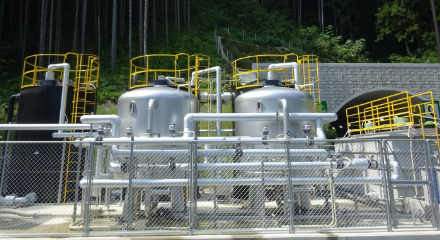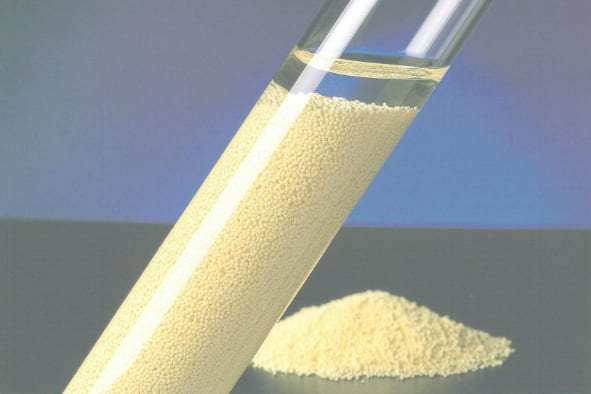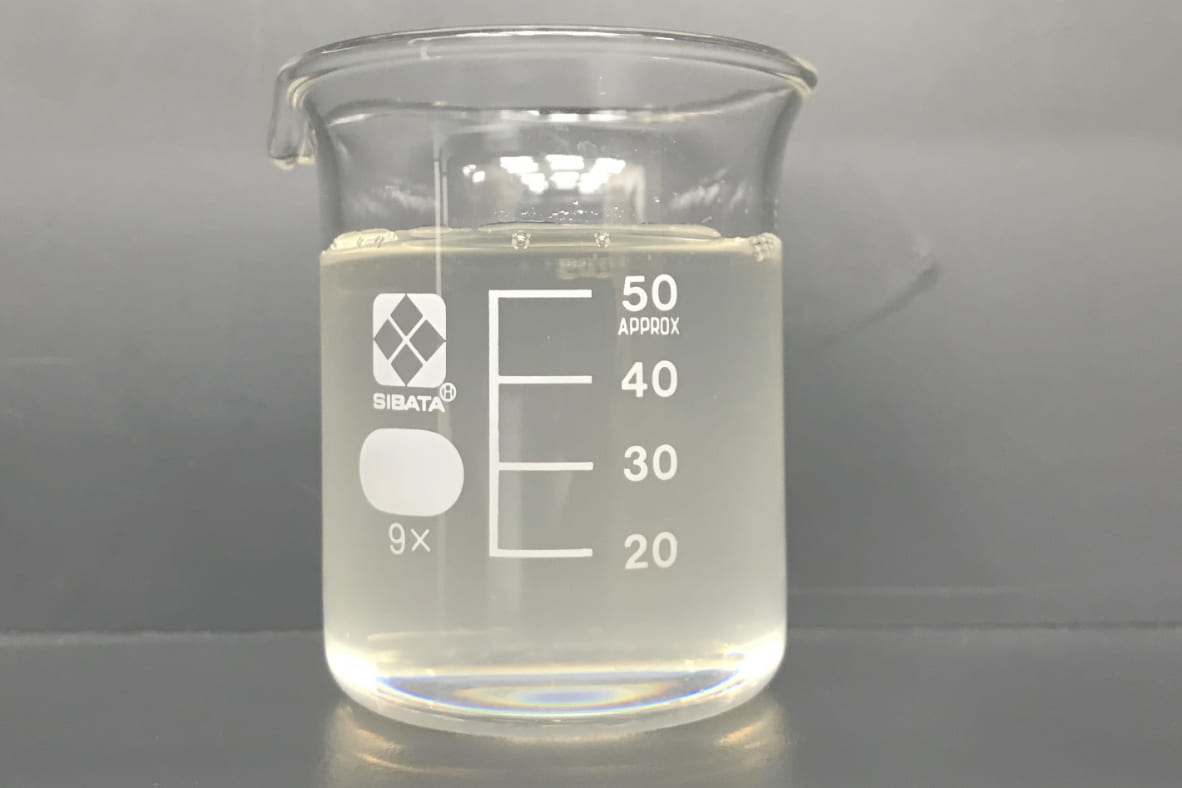Treatment of detected arsenic from a tunnel springwater by using an adsorbent

Contents
1.The place of treating arsenic by using a water treatment adsorbent, “READ-As”
2.How to remove arsenic from water
4.READ series Use of arsenic absorbent, “READ-As”
5.Use “READ-As” for the treatment of arsenic-containing wastewater
The place of treating arsenic by using a water treatment adsorbent, “READ-As”
The site of current tunnel excavation
Water treatment of arsenic
Arsenic is carcinogenic and affect the hematopoietic function and immune system. It is also toxic to the liver and kidney. There are some cases that arsenic discharged in wastewater during the manufacturing processes, but also it naturally present in the groundwater and surface water both in Japan and abroad such as China, India and Bangladesh. There are four treatments of arsenic-containing wastewater and it could be combine together; iron co-precipitation method, coagulation sedimentation method, biological contact filtration and adsorption method. The following describes an example of use of our adsorbent from the READ series removing arsenic which detected during a tunnel excavation.
Example of arsenic treatment by using a water treatment adsorbent, “READ-As” at a site of tunnel excavation.
Arsenic contaminated springwater was found during a current tunnel excavation and it was required to treat the water pollution level below the Environment Quality Standard after the excavation finished.
Therefore, we have installed the arsenic adsorption adsorbent equipment by using our “READ-As” at the tunnel exit.
“READ-As” undergoes the regeneration treatment at our plant for a constant period. “READ-As” will practically use after filling it into the adsorption tower.
As a result of the above process, “READ-As” could response to the flow rate fluctuation. Also, it could adsorb and stabilize the arsenic level of treated water less than 0.01mg/L when it is in automatic operation.
Result of arsenic treatment by using a “READ-As”
The following data were obtained from the two tunnels (tunnel A and B) where the arsenic treatment equipment was placed.
(1)Tunnel A
Concentration of water treatment: As = 0.11 → less than 0.01 mg/L
Quantity of treated water: 1,512 m3/d
Quantity of adsorbent: 5,000 L/tower x two towers
(2)Tunnel B
Concentration of water treatment: As = 0.10 → less than 0.01 mg/L
Quantity of treated water: 360m3/d
Quantity of adsorbent: 1,500 L/tower x two towers
Coagulation sedimentation method and biological contact filtration are generally used as a basic treatment for arsenic removal and this requires the regular replenishment of chemicals, the removal and disposal of sludge and other practices, which result in greater running costs. However, there is no need of sludge disposal by using this adsorbent and help you to reduce the running costs with minimize both management and operational burdens.
READ series Use of arsenic absorbent, “READ-As”
When treating arsenic with an adsorbent, the concentration in the raw water is relatively low and this reduces the frequency of regeneration. In Japan, our plants receive adsorbents for the regeneration treatment and redeliver the regenerated adsorbents to the customer.The following describes the flow of water treatment by using an arsenic adsorbent.

Use the “READ-As” for the treatment of arsenic-containing wastewater
The water treatment adsorbent, “READ-As”, which was implemented at the site of tunnel excavation, is one of the READ series products designed for treating arsenic-containing wastewater. “READ-As” features is that has a high performance of arsenic adsorption and extends the regeneration cycle, which can be expected to reduce the running costs.
It has passed the water supply materials and equipment test and it can be used for a treatment of potable water.There are two main installation places. One is the place for wastewater treatment such as semiconductor factories, hot spring facilities, civil engineering sites. Also, the other is for the potable water treatment such as food factories, potable water factories and water purification plants.


